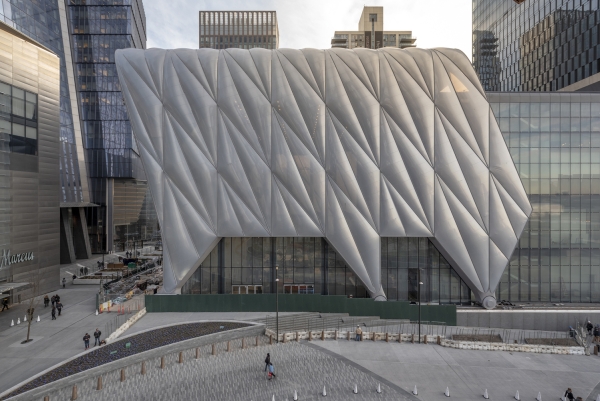Advancements in technology have paved the way for a revolutionary approach to architecture, one that involves responsiveness and movement. This concept called "kinetic architecture" allows buildings to dynamically adapt to their ever-changing surroundings. As of today, kinetic principles are commonly applied to enhance the environmental sustainability of buildings, especially through facades. However, kinetic architecture has the potential to impact the built environment in other facets as well. In public spaces, kinetic architecture holds immense promise, presenting opportunities to make them more accessible, inclusive, and user-friendly. Introducing kinetic elements into public spaces challenge long-held assumptions about architecture as a passive arrangement, ushering in a new era of interactive and engaging urban environments.
In the realm of public space, kinetic architecture serves as a responsive interface that seamlessly connects spaces, activities, and communities. Utilizing innovative design principles, public spaces can be equipped with a range of dynamic elements, including retractable canopies, movable seating arrangements, and adjustable ramps. These features imbue shared spaces with versatility, adapting to diverse functions and activities while supporting accessibility and inclusivity.
Long before the term “kinetic architecture” gained recognition, designers had been incorporating moving elements into buildings and public spaces. From mechanical ramps and elevators to automated doors, these simple interventions paved the way for a more inclusive built environment. Kinetic features empower individuals with mobility challenges to navigate freely and seamlessly integrate into public spaces, breaking down physical barriers that once limited their participation.
The advent of smart technologies has further expanded the possibilities for creating accessible public spaces through the use of kinetic elements. Designers can now explore more innovative applications of kinetic architecture, pushing the boundaries of user-friendly built environments.
The impact of kinetic architecture on public interaction is multi-faceted. It builds a sense of curiosity and intrigue, enticing people to further explore and engage with their surroundings. As they become active witnesses to the metamorphosis of public spaces, users are inspired to participate actively and contribute to the public realm. The Shed in New York, for example, can morph its built form to support various forms of public activity. The nonprofit cultural organization serves as a platform for original works of art spanning diverse disciplines and audiences. The building boasts a retractable roof that enables physical transformation, allowing for changes in geometry and interior arrangement to accommodate artists' ambitious visions.
The movement of the external facade has a significant impact on its locality, shaping an adjacent city square from negative space. By embodying a permanently flexible infrastructure, The Shed remains responsive to the evolving needs of artists, as well as to the unpredictability of future advancements in scale, media, and technology. Kinetic architecture not only intensifies the potential uses of public spaces but also injects a sense of variability and unpredictability, making each visit a unique experience. By creating a participatory environment, kinetic architecture brings communities together, forging new connections and enhancing the social fabric of public spaces.
Kinetic structures not only enhance the functionality of public spaces but also cultivate a sense of empowerment and ownership among their users. By enabling individuals to interact with and manipulate their environment, these structures grant people agency over their experiences in these shared spaces. Adaptable spaces communicate to users that their needs and desires are essential contributors to the urban fabric of their communities, empowering them to take an active role in shaping and participating in these spaces.
Vienna's Museum Quartier successfully promotes a sense of ownership and belonging in its public square. The space features light modular street furniture made of foam. Users instinctively adapted this furniture for practical purposes, swiftly integrating it as an essential element of the space and a distinctive feature of both the square and the city. Currently, the variability of the furniture allows for flexible arrangements, accommodating the specific needs of different groups and changing natural lighting throughout the day.
In this case, users directly influence the arrangement of the public furniture, and as community engagement and participation increase, the potential for diverse spatial configurations expands. As individuals coordinate with one another, the layouts created become increasingly intricate and multifaceted, exemplifying the transformative power of collective action in shaping and enhancing public spaces.
The potential of kinetic structures to create accessible public spaces is vast. Successful incorporation of responsive elements requires designers to maintain dialogue with communities, ensuring that their needs and preferences are addressed. To achieve truly inclusive spaces, the integration of universal design principles from the early stages of planning is essential. Public spaces serve as the heart of communities, providing venues for social interaction, recreation, and cultural activities. The impact of kinetic spatial configurations on urban space and public life is profound. By incorporating adaptable features and thoughtful design principles, kinetic structures actively contribute to the creation of a more inclusive and equitable society.
________________________________________________________________________________________________________________________________________________________
▪ Source: Archdaily|https://www.archdaily.com/1003367/how-can-kinetic-architecture-enhance-public-space?ad_campaign=normal-tag
▪ Words: Ankitha Gattupalli
▪ Photography Credit: © Ming Chen, © Shai Gil, © Timothy Schenck, © SFAP, © Nick Kane


